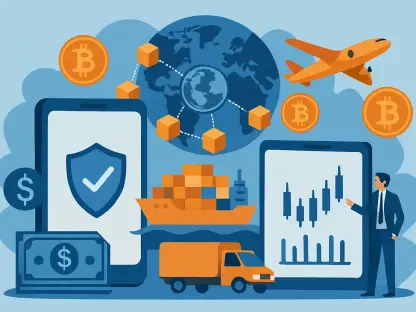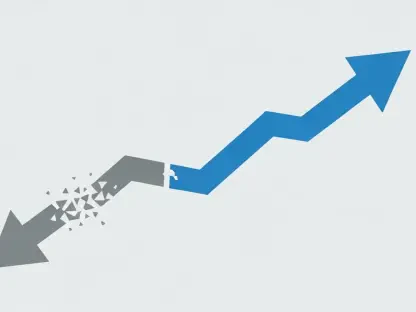Priya Jaiswal, a seasoned expert in Banking, Business, and Finance, brings a wealth of knowledge to today’s discussion. With her extensive experience in market analysis and international business trends, Priya offers invaluable insights into the dynamics shaping the financial technology landscape, particularly with regard to peer-to-peer payment platforms like Zelle. As we explore the potential growth of Zelle among community banks and the strategic implications of its expanding network, Priya will shed light on why small banks may both embrace and shun this technology.
Can you explain the significance of the announcement that Early Warning Services added 178 banks and credit unions to Zelle?
The addition of 178 banks and credit unions to Zelle significantly broadens its network, which is pivotal for expanding its reach and encouraging widespread adoption of real-time payment systems. By increasing the number of participating institutions, Zelle enhances its ability to meet consumer demand for rapid payments, thereby solidifying its competitive edge in the financial technology space. This kind of expansion is crucial for sustaining its market presence, particularly as more consumers are leaning toward digital transactions over traditional methods.
Why are community banks considered an untapped area of growth for Zelle?
Community banks represent a substantial potential market for Zelle because these smaller institutions have yet to fully capitalize on the demand for peer-to-peer payment platforms. Despite their relatively conservative growth trajectory, community banks are uniquely positioned to offer personalized services which appeal to local customers. By integrating Zelle, these banks can better compete with larger conglomerates, offering state-of-the-art payment solutions while enhancing customer retention and acquiring new, tech-savvy clients who value convenience and immediacy in financial transactions.
What challenges do small financial institutions face when deciding whether to join the Zelle platform?
Small financial institutions often face dilemmas regarding cost and integration. Zelle charges relatively high transaction fees, which could burden smaller institutions already operating with tighter margins compared to their larger counterparts. Additionally, there are significant technological and regulatory hurdles in adopting new payment systems, something smaller banks may struggle with due to limited resources. These factors must be weighed against the potential benefits of increased customer engagement and satisfaction that Zelle could bring.
How do the transaction fees for Zelle compare to the costs associated with processing paper checks?
Transaction fees for Zelle, ranging from 25 to 90 cents per transaction, are substantially higher compared to the processing costs for paper checks, which fall between 5 to 15 cents. This disparity can be quite significant for institutions with high transaction volumes, influencing their decision to adopt Zelle. While digital transactions offer advantages such as speed and convenience, the increased costs can pose a challenge, particularly for community banks and credit unions operating on smaller budgets.
Are the seven largest banks that own stakes in Early Warning Services paying different rates for using Zelle? If so, why?
Yes, the largest banks that hold stakes in Early Warning Services reportedly benefit from lower rates due to their ownership positions. This preferential pricing structure is likely a strategic move to incentivize continued partnership and support from these major banks, ensuring their alignment with Zelle’s growth objectives. It also reflects the economies of scale inherent in larger financial operations, allowing them to negotiate more favorable terms and leverage their extensive customer bases.
What are the potential benefits for banks that offer a peer-to-peer payment platform like Zelle?
Banks offering platforms like Zelle can benefit from improved customer engagement and retention, appealing directly to the growing demographic accustomed to instantaneous transactions. Such platforms are associated with an increase in overall transaction volumes and new account openings, allowing banks to enhance their service offerings and potential revenue streams. Additionally, adopting cutting-edge technology cements a bank’s reputation as an innovator in financial services, attracting tech-savvy customers and staying competitive in the rapidly evolving financial landscape.
How does the potential partnership with the Treasury Department impact Early Warning Services and its relationship with banks?
A partnership with the Treasury Department could have profound implications, as it would position Early Warning Services at the forefront of government-related transactions, potentially outstripping traditional methods such as paper checks. This union could elevate the trust and credibility of Zelle among financial institutions, incentivizing additional banks to join the network. Banks themselves would benefit from streamlined operations and heightened reliability, fostering stronger institutional ties to Early Warning Services and its platform, Zelle.
What is the significance of achieving high penetration rates among federal funding recipients for Early Warning Services?
Securing high penetration among federal funding recipients would allow Early Warning Services to capitalize on major transactional streams, providing a gateway to substantial data access and operational command. Such penetration illustrates the network’s universality, paving the way for expanded institutional participation and reinforcing its status as a dominant player. It would also demonstrate Zelle’s capability to efficiently manage large-scale transactions, thus attracting even more banks seeking reliable service providers.
How does participation in the Zelle network benefit Early Warning Services in terms of customer data access?
Participation in the Zelle network avails Early Warning Services of a wealth of customer data, which can be pivotal in developing emerging payment technologies. Rich data sets allow for sophisticated analysis and personalization of services, like digital wallets and AI bots, thereby customizing consumer experiences. This capability is invaluable as fintech companies strive to provide proactive and adaptive financial solutions, cementing customer loyalty through bespoke offerings informed by their spending patterns.
What emerging payment technologies could be powered by the data collected from Zelle transactions?
The data derived from Zelle transactions could fuel advancements in agentic artificial intelligence, transforming how consumers interact with financial technologies. For example, AI-powered digital wallets could make tailored financial recommendations or even execute automatic transactions based on personal preferences. This integration of AI into payment services enriches consumer experiences while improving financial literacy and management, pushing the envelope of what digital banking can achieve.
How does the competition in agentic payments affect Early Warning Services’ strategy?
Competition in agentic payments compels Early Warning Services to innovate rapidly and match issuer penetration levels seen in established entities like Visa and Mastercard. This competitive pressure demands strategic agility and the continuous introduction of advanced features to stay relevant. Failing to keep pace could result in missed opportunities, as AI-powered systems and wallets could bypass Zelle, triggering a need to reassess and possibly overhaul its feature set and customer engagement strategies.
What were some key findings from the 2022 study conducted by Early Warning Services and Curinos?
The 2022 study highlighted how Zelle can substantially increase customer engagement for participating financial institutions, revealing that new users engage in nearly three times as many debit transactions compared to their counterparts without Zelle. Such findings underscore the platform’s effectiveness in driving transaction volume and customer loyalty, validating the strategic value for banks adopting peer-to-peer payments. This behavioral shift confirms the demand for seamless digital payment solutions and the burgeoning role of Zelle within it.
How does Zelle drive customer engagement for the financial institutions that use the platform?
Zelle enhances customer engagement by providing a swift and reliable channel for peer-to-peer transactions, appealing to consumers who value efficiency and immediacy in financial interactions. Its usability encourages increased transactional activity, fostering more robust and frequent interactions between customers and their banks. This platform drives customer loyalty by aligning with modern digital-first expectations and offering the convenience and security increasingly demanded by today’s consumers.
What concerns have been raised by Democrats in Congress and consumer advocates regarding the Zelle platform?
Democrats and consumer advocates have raised concerns about the potential for scams and fraud on the Zelle platform. Criticisms are rooted in instances where funds have been misdirected or lost due to fraudulent activities, necessitating congressional scrutiny and investigations. These groups have called for stronger measures to protect consumers, emphasizing transparent communication and enhancing security protocols to mitigate risks inherent in peer-to-peer payments.
How has Zelle responded to criticisms about scams and fraud on its platform?
Zelle has responded by actively defending its security practices, emphasizing the rarity of fraudulent transactions and instituting user advisories against interactions with unknown entities. Company executives reiterate the platform’s security efficacy through internal data, showcasing that incidents of fraud are negligible. Moreover, Zelle continues to refine its policies and fortify its safeguards to reassure users, focusing on education and awareness to prevent scams before they occur.
What steps have some of the seven owner banks taken to address issues related to scams and fraud on Zelle?
Owner banks have implemented stringent measures to curb fraud, exemplified by JPMorgan’s refusal to process transactions from unverified social media sources like Facebook. Such proactive steps illustrate a commitment to protecting consumers by targeting major avenues through which fraud might proliferate. These actions reflect an industry-wide shift toward fostering security, reaffirming banks’ dedication to user safety while strengthening the credibility and reliability of the Zelle platform.
Do you have any advice for our readers?
Understanding the critical role of digital platforms like Zelle in modern finance is vital. Readers should stay informed on technological advancements and consider carefully how these innovations impact personal and business finances. It’s worthwhile to prioritize security when engaging in peer-to-peer payments and remain vigilant in recognizing trustworthy platforms. Additionally, embracing new technologies can enhance financial management, offering opportunities to streamline transaction processes and interact seamlessly with financial markets.









